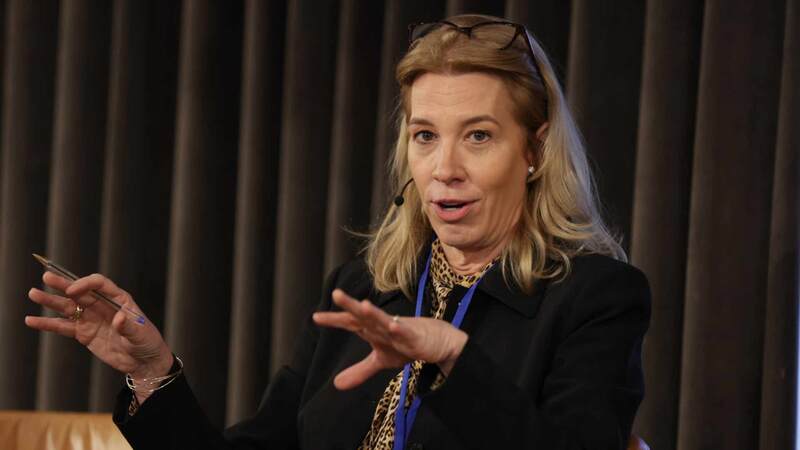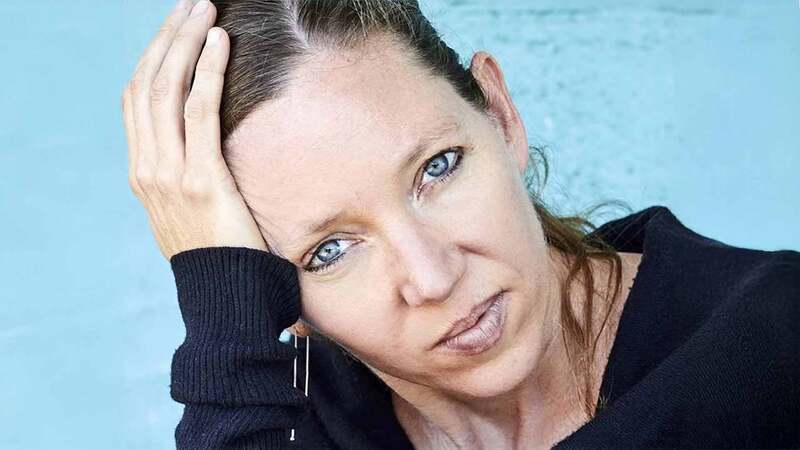You are viewing your 1 free article this month. Login to read more articles.
Jennie Rooney on secrets and spies
Think of your deepest, darkest secret, one that you could never tell those closest to you—your family, your friends—because it would destroy them. Now think about keeping that secret for decades until it comes out suddenly, glaringly public and with catastrophic consequences.
That is the basis of Jennie Rooney’s third novel Red Joan, which is part gripping Second World War thriller, part love story. In 2005, octogenarian Joan Stanley gets a knock on her door and is whisked away to be interrogated by MI5, who accuse her of spying on Britain for Russia during the Second World War and the Cold War. Her high-flying, well-connected barrister son Nick arrives to defend this preposterous charge, but Joan soon reveals—in painful, shocking detail—that the accusation is true.
The book’s action cuts between 2005 and the late 1930s, when Joan arrives at Cambridge University, meeting the glamorous Russian émigré Sonya and her dashing cousin Leo. Unworldly and gauche, Joan falls in love with Leo and gets swept up in communist rallies and heated political debates.
One of the main conflicts of the book is Joan’s conversion to the communist cause, which is less based on political conviction and more on her personal life. And even when she does start spying in earnest while she is working at a Cambridge “Metals Research Facility”—a front for Britain’s atomic bomb programme—it is not because she has converted wholeheartedly to Marxism, but rather because she is shocked into it by an unimaginable act.
“When I first started writing the book, Joan was going to be political from the very start,” Rooney says. “But then I thought that in some ways that’s the easy way out, that there would be less of a conflict. I began to think about these people at Cambridge—there were obviously a lot of sympathisers at the time—and I thought that the interesting thing would be to focus on at what point people get turned, and why.”
Crime and punishment
It may sound slightly preposterous that MI5 would use time, money and resources on prosecuting a long-dormant spy in her 80s, yet Red Joan is based loosely on a real story.
In 1999, the security services arrested 87-year-old great-grandmother Melita Norwood at her south-east London home, unmasking her as a long-serving KGB operative who passed on atomic bomb secrets to the Soviets. Norwood’s first reaction to her arrest—later recounted in David Burke’s wonderfully titled book The Spy who Came in from the Co-op —was: “Oh, dear. I thought I got away with it.” Rooney was studying history at Cambridge at the time, and the story stuck with her, not least because part of her research was into early 20th-century espionage. “For a long time I wasn’t thinking of it as a novel, just the history of it,” she says.
Red Joan, Rooney is keen to underline, diverges quite a bit from real life: “Norwood’s story was interesting but I knew the character had to be torn. I didn’t want Joan to be a full communist. To her dying day, Norwood was never sorry for what she had done, she was never in doubt.”
The plot is driven along partly by a series of “intelligence reports” on the main characters written in the style (and font) of the 1930s and ’40s reports that the British security services filed on all manner of subversive elements. These passages are based upon thousands of similar declassified security documents Rooney came across while doing research at the National Archives at Kew.
“They are unnerving in the number of people the state was following,” Rooney says. “But also rather hilarious in details. For example, subjects were followed into movie theatres, the movies were described in detail, and it was recorded whether the subject seemed to be liking the film or not.”
Writing history
Rooney was born in Liverpool and moved to Zambia for a year when she was young after her accountant father was sent there for work, but mostly grew up in “glamorous Bromley”, Kent. After her Cambridge history degree, she trained to be a lawyer and joined a firm in the City. She was spurred to pick up her pen almost immediately after starting. “I always wanted to write and thought I would do it one day. But on one of my first days working as a lawyer I heard a couple of my colleagues talking and one said: ‘I’ve been here 10 years, where has the time gone?’ I thought, ‘Right, I’m going to get cracking.’”
Like Red Joan, her first novel Inside the Whale (2008)—which was Costa First Novel-shortlisted and was the Richard & Judy Book Club début choice—deals with the long-term effects the Second World War has on people’s lives, and confessing truths to your family. Her second novel, The Opposite of Falling (2010), centres around a love story during the early days of manned flight in the late 1800s.
She says she doesn't necessarily consider herself a historical novelist, because she has not thought too deeply about what drives her to certain stories. “I would like to write a contemporary novel, but I don’t think it is there yet. I do like the research of the historical novel, but I suppose it’s what has always interested me. I don’t know why [historical novels] appeal to me—perhaps because I don’t know why they wouldn’t appeal to everyone.”
Red Joan by Jennie Rooney is published by Chatto.















